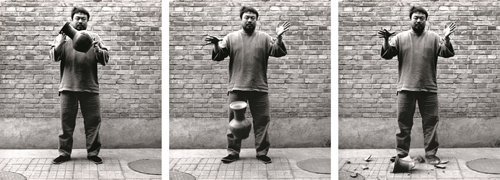Art and Ethics
A lesson for DP1 Students on Art & Ethics which can be placed within Area of Knowledge The Arts, and any of the optional Themes, particularly Knowledge and Language, and Knowledge and Politics.
Lesson Objectives.
By the end of this lesson you should have:
Considered the relationship between artistic freedom and ethics.
Considered issues of denotation and connotation of knowledge.
An introduction to 3 of the main schools of Ethics.
Starter Activity.
Here we introduce 3 of the main schools of ethics.
Group Learning.
Each group will be given a case study.
Your objective is to prepare a short presentation (maximum 4 slides) answering the following 2 questions:
What are the ethical issues arising from the production, or display, of this artistic knowledge?
Is it possible to resolve these ethical issues ?, if so, how
Your Presentation should have the following slides:
Context (e.g. what is the artwork?, who was the artist?, When was it created? etc).
Controversy. (e.g. What & why was there controversy associated with this artwork? What were the ethical issues? etc)
Justification ? (e.g. Is the artwork justifiable in either artistic or ethical terms?)
Resolution ? (e.g. Is it possible to resolve an artistic & ethical conflict? and if so how?)
Group 1: Fountain (1917) by Marcel Duchamp
Resources:
Context & reasons for controversy from The Tate Gallery, London.
Short video explanation of controversy.
Extra hint: Part of the ethical issue here is about Gatekeepers & the context of art.
Group 2: Dropping a Han Dynasty Urn (1995) by Ai Weiwei
Resources:
Clear explanation of what & why.
Context & a short explanation of controversy from The Guggenheim.
The case for Ai Weiwei's piece Dropping a Han Dynasty Urn (Video)
Extra Hint: the ethical issues here relate to duplicitous values.
Group 3: My Bed (1998) by Tracey Emin.
Resources:
Context & Controversy (4 min read)
Tracey Emin explains the origin of My Bed, and its meaning to her (video).
Extra hint: The ethical issues here partly concern what the work means to the artist (connotation) vs how others interpret the work (denotation).
Group 4: Piss Christ (1987) by Andres Serrano
Resources:
Context & explanation by Andres Serrano
Context & controversy from Artland Magazine
Andres Serrano explains the piece in The Guardian
Extra hint: One of the ethical issues that the artist draws is between popular culture, meaning and that which is defined as art.
Group 5: Helena (2000) by Marco Evaristti
Resources:
Quick video explaining the work.
Explanation of the work, and intention of Marco Evaristti
Evaristti's explanation of his work (search down for "Helena).
Extra hint: The role of the viewer (or audience) is, arguably, the focus of this work.
Group 6: Statue of Edward Colston (1895) by John Cassidy
Resources:
Wikipedia article giving outline.
Guardian article giving context & controversy.
Interesting video of the outcomes of the controversy.
Extra hint: The issue of whether we should judge the past by the standards of today is salient here.
Group 7: The Parthenon Marbles (5th Century BCE) by Phidias
Resources:
Video explaining the Parthenon Marbles and the controversy.
Wikipedia article giving an overview
Extra hint(s): There are ethical issues concerning originality, and cultural appropriation here.








